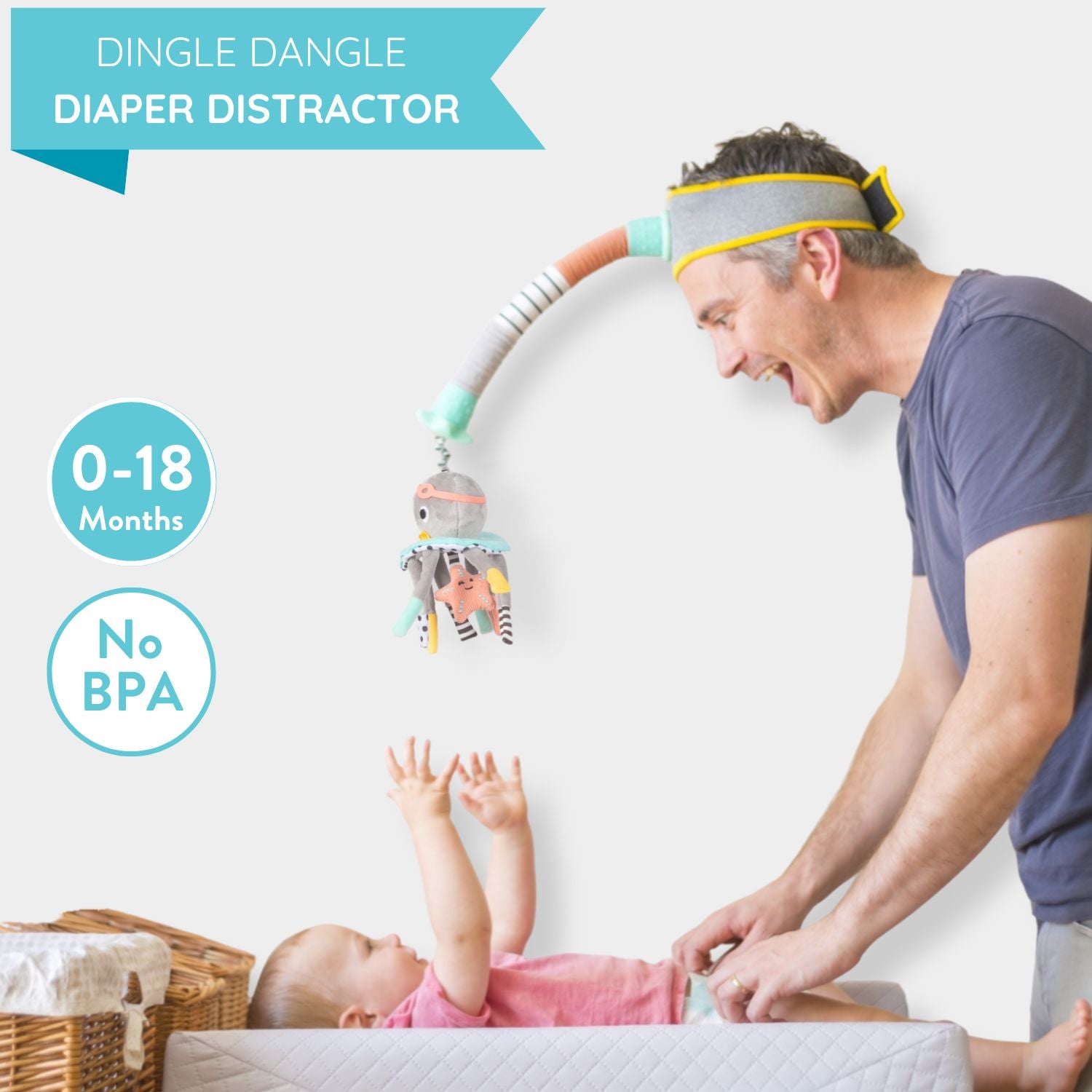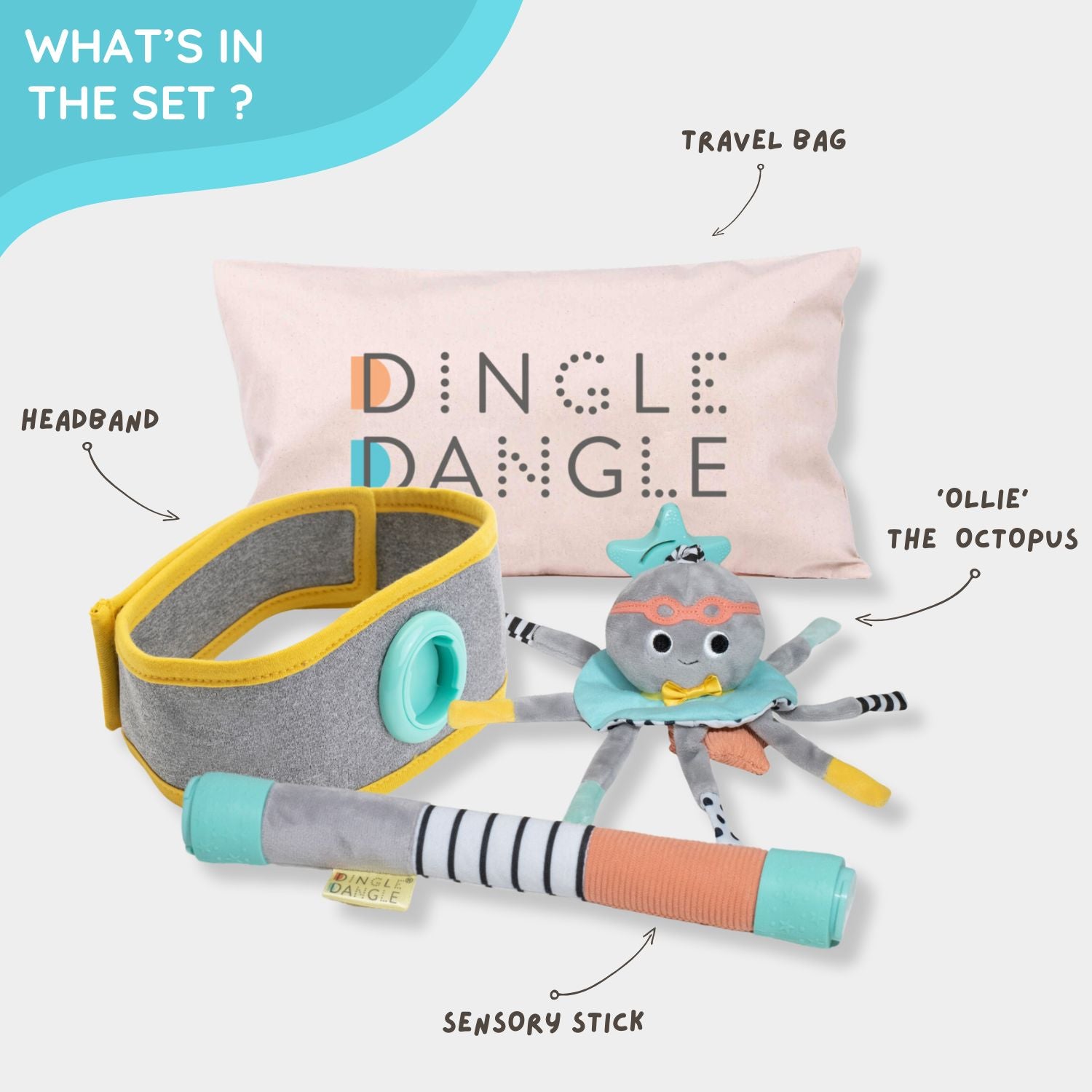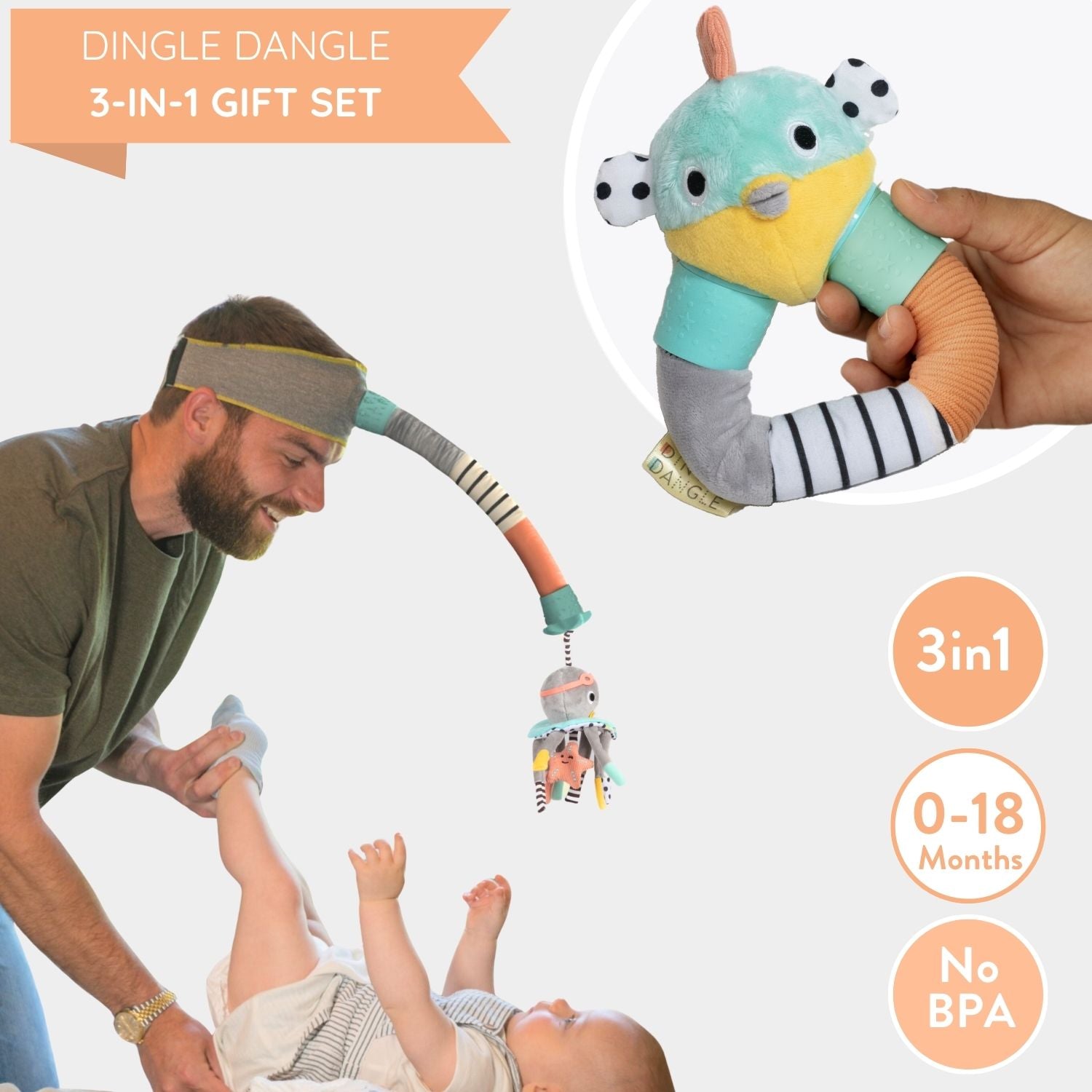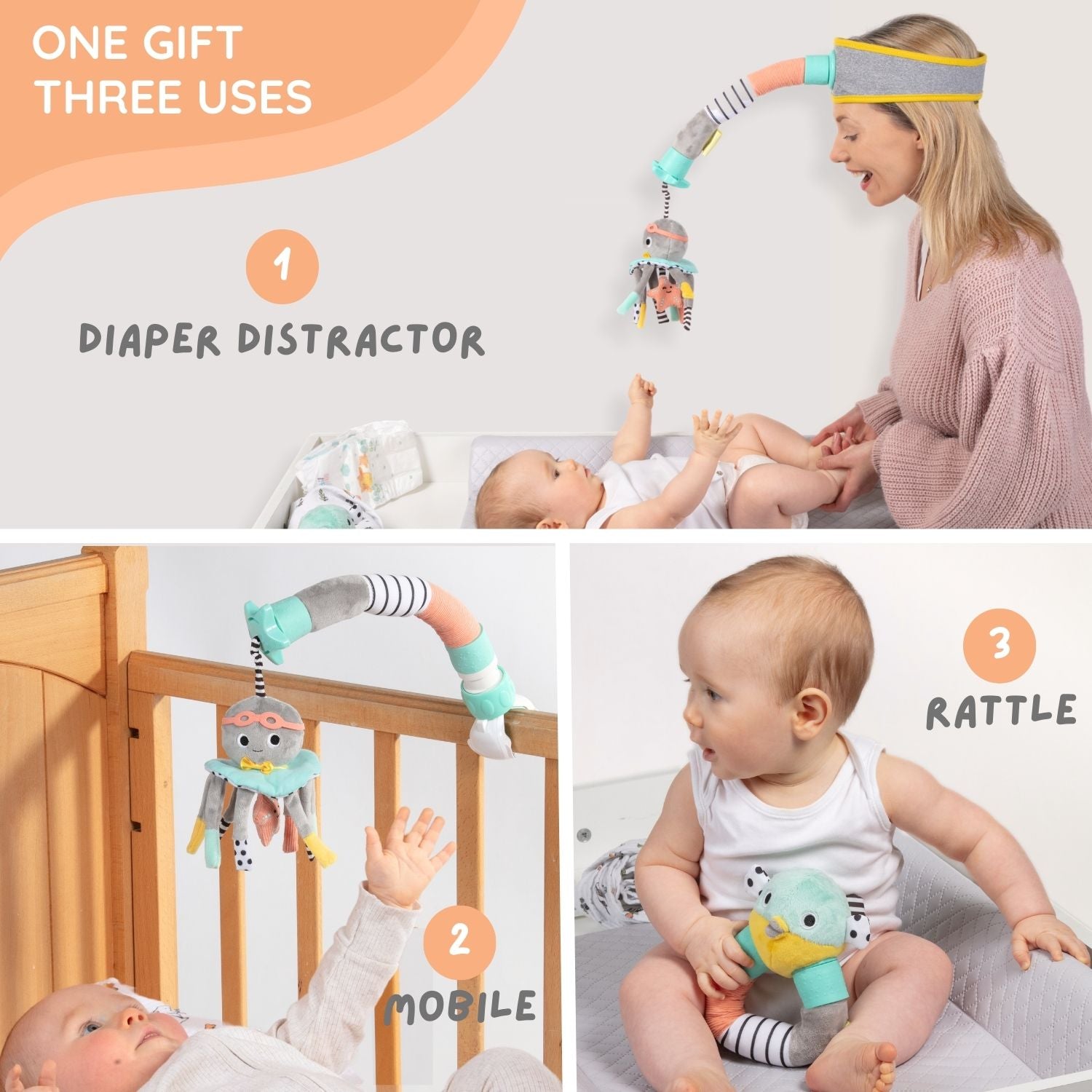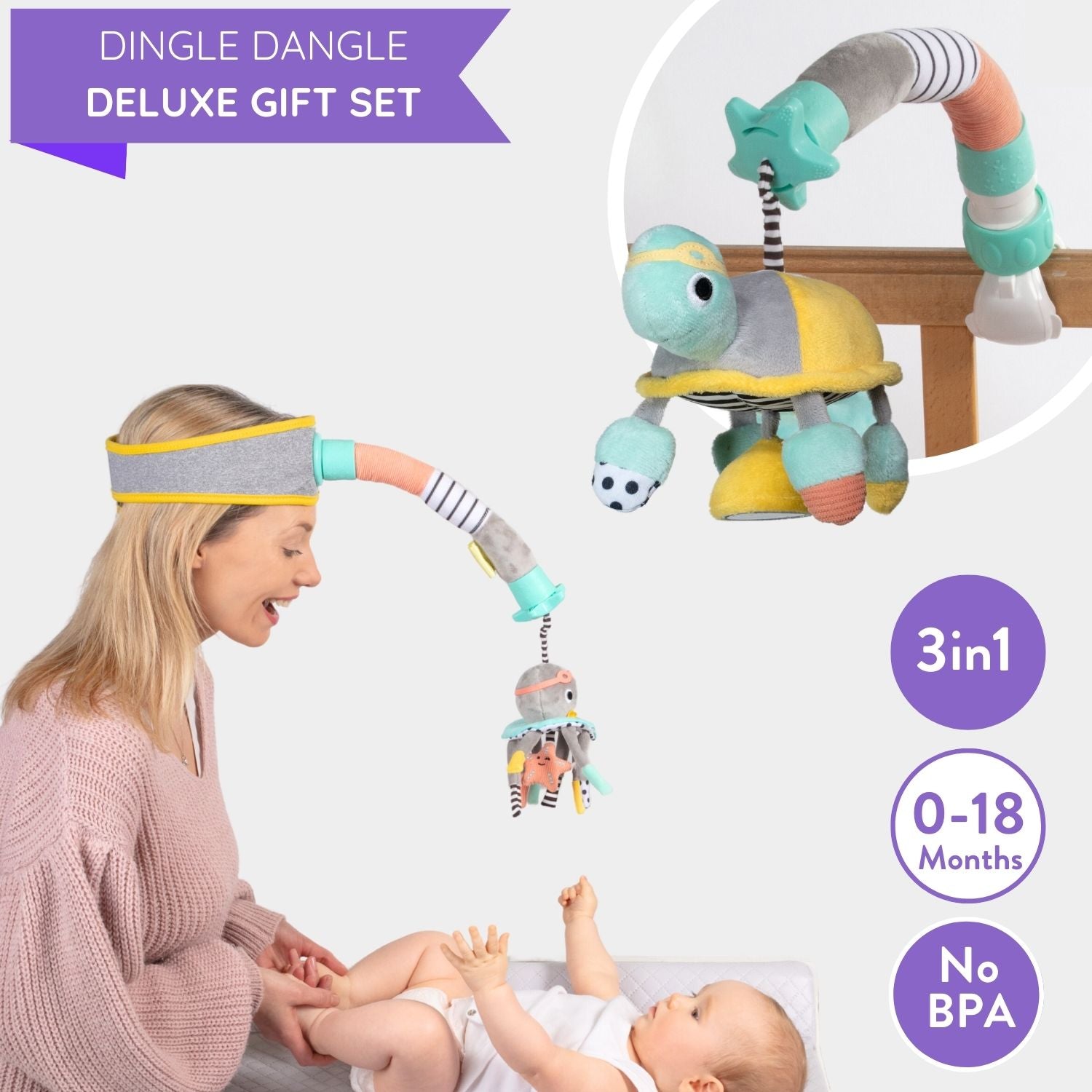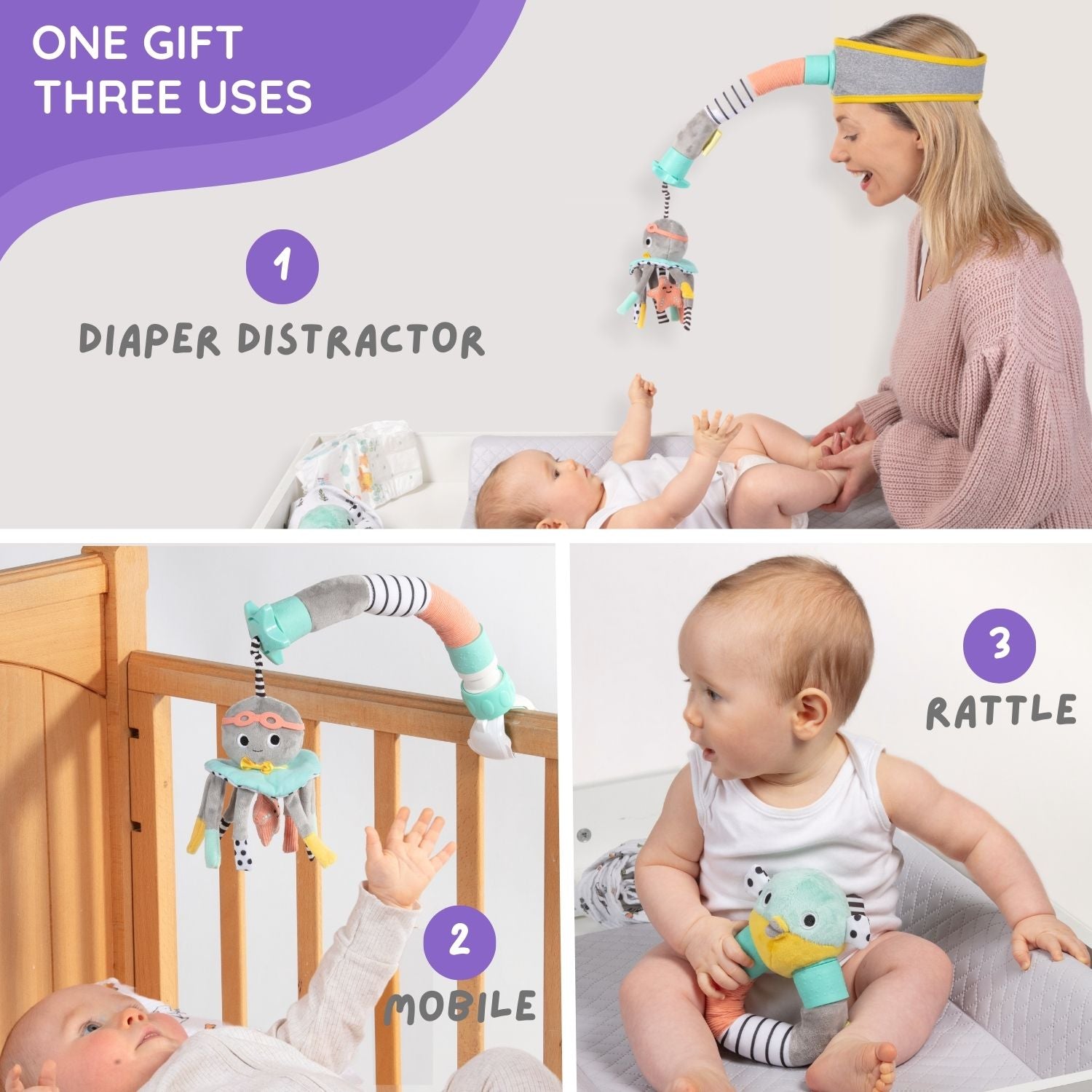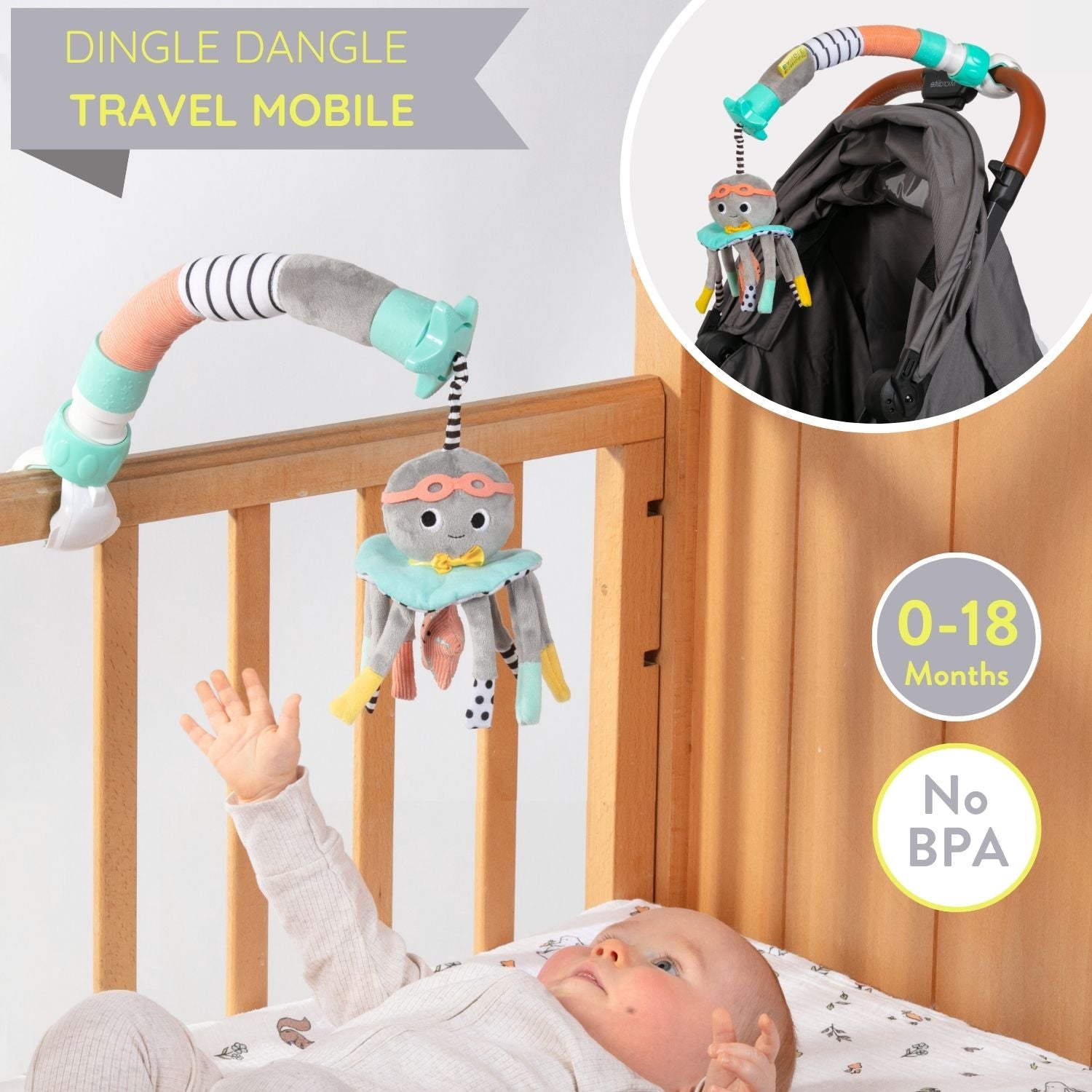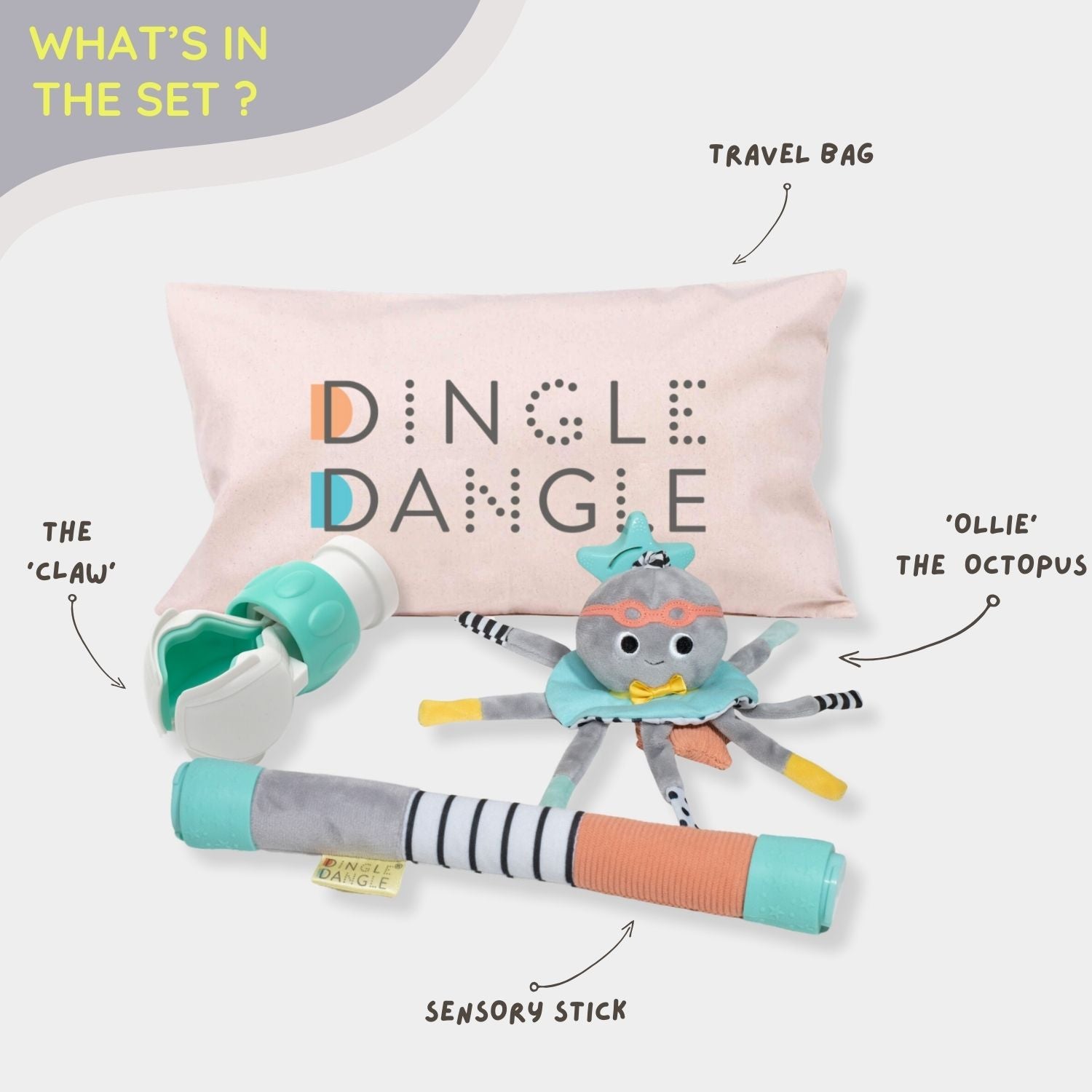![What Color Toys Are Best for Babies? [Our Research-Driven Answer]](http://www.dingledanglebaby.com/cdn/shop/articles/baby-toy-color.jpg?v=1655724416&width=2000)
![What Color Toys Are Best for Babies? [Our Research-Driven Answer]](http://www.dingledanglebaby.com/cdn/shop/articles/baby-toy-color.jpg?v=1655724416&width=2000)
· By Stewart Gold
What Color Toys Are Best for Babies? [Our Research-Driven Answer]
It doesn't take long for new parents to develop an instinct for which toys our babies will like best.
You know, the ones that seem to call out to our little ones: “PICK ME UP!,” “CHOOSE ME!,” “LOVE ME!”
Of course, there will always be some “duds” in the mix – toys that just don’t make the cut for one reason or another. But there’s something really satisfying about choosing just the right toy and seeing the level of joy and engagement it brings.

Even as our toy-buying prowess develops over time, shopping for toys can be an overwhelming experience. There are so many to choose from and so many factors to consider.
- Is the toy safe?
- Is it age-appropriate?
- Is it fun to play with?
- Will my baby actually like it?
For many new parents, one of the big questions is how color affects their baby’s development. If you are looking to find out what color toys are best for babies – we've done the research for you!
Do Babies Need Colorful Toys?
Babies don’t need toys the same way they need food and sleep, but don’t underestimate the importance of the right toys in the development of your baby.
Colorful toys are great because they help capture a baby’s attention and instill a sense of wonder as they begin to explore the world. In particular, bright and contrasting colors really stand out for young kids whose eyes are still developing.
Newborns are somewhat impartial to color due to their blurry vision at birth, but as they develop, it is important to expose them to a wide range of patterns and hues.
Whether you are choosing colors for your nursery or selecting the best toys for cognitive development, remember: for newborns, high contrast is key.
For older babies, bright primary colors should be incorporated for optimal variety and engagement.
Research also shows that different colors elicit different emotions. This may be something to keep in mind as you select toys for different purposes. For example, if you’re looking for a toy to soothe, you may choose something heavy in blues, purples, or greens.
If you’re looking for a more active, excitement-inducing toy, you might go with a red or orange-heavy theme.
Are Black and White Toys Good for Babies?
When answering “What Color Toys Are Best for Babies?” – the answer is typically black and white. Is this true?
Yes!
First things first: in order for your baby to enjoy a toy, she needs to be able to see it. With their retinas not yet fully developed, babies can only detect light-dark contrasts.

Since black and white register more clearly than other colors for newborns, patterns and shapes that employ this stark contrast will encourage babies to keep their attention on the object at hand. This process helps them to strengthen their focus and further develop their nervous system.
Remember: babies’ vision will improve over time, but it’s something they need to work at.
Initially, they can hold their gaze for only seconds at a time, but by taking in new images, colors, and patterns, they will learn to register new colors and shades, to hold their gaze longer, to focus more clearly, and to track motion.
Eventually, they will start reaching for objects, like toys and rattles, thus engaging multiple senses at once. But it all starts with black and white, which they are able to see through the blur of undeveloped eyes in early infancy.
What Color Toys Are Best for Babies?
Is toy color just a matter of preference … or does it matter in terms of development? It’s something that every parent thinks about when bringing new baby products into the home.

Visual stimulation is super important for babies because it promotes retina development and growth in the optic nerve. Of all five senses, vision delivers the most information to a baby’s brain.
Therefore, parents can aid in their babies’ eye and brain development by exposing them to a wide array of visual stimuli. One way to accomplish this is to provide toys with a variety of Colors, shapes, textures, and patterns.
Clearly, the visual features of a toy are important, but which specific colors or patterns are best, and why?
Because a baby’s vision changes so rapidly over the first few months of life, this question is a little more complicated than just a simple “yellow,” “red,” or “green.” In fact, the best colors for a newborn may be different from the colors that best suit a 2-3-month old, a 6-month old, or a 1-year old.
When they are first born, babies can’t register the full color spectrum. Their vision is quite blurry, so they are more tuned into high contrast colors and patterns than low contrast, muted colors.
In other words, they’re drawn to what they can see!
Gradually, as their vision develops, babies can start to differentiate between shades and typically, by 5 months of age, they have pretty good color vision. At this stage, they tend to prefer brighter colors to pastels, as brights will stand out more in their still-limited visual field.

Because of the constant and rapid changes in babies’ visual acuity, toys with a variety of colors and patterns can have more longevity. Babies may notice and be drawn to different aspects of these toys as they progress from newborn to toddler, increasing the staying power and the overall value of that toy.
I don’t know about you, but a toy that remains both useful and entertaining over the course of months – or even years – is a clear winner in my book!
What Is an Age-Appropriate Toy For A Newborn?
For newborns, the best toys are those that engage their multiple developing senses, including, of course, the all-important sense of vision. Multi-faceted toys like the Dingle Dangle seem to check all the right boxes.
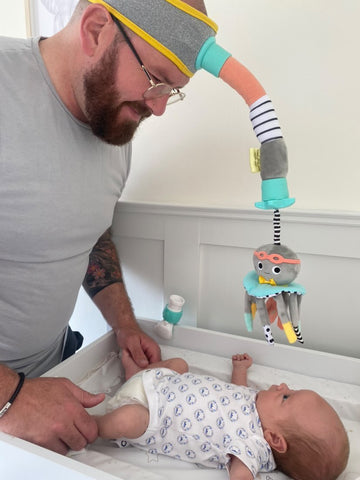
When I first saw the Dingle Dangle, I laughed and asked, “what on earth is this crazy contraption?!” It certainly has a unique look, especially in “headband wearing mode.” But as I explored further, the genius of the Dingle Dangle revealed itself.
It’s a rattle, a portable mobile, AND a diaper-changing assistant (i.e., ultimate baby distraction tool!)
My favorite part of the Dingle Dangle is the multi-colored octopus that drops down from the sensory stick.
The octopus hangs in the perfect visual range for a newborn, since their focal zone is limited to within 8 to 10 inches of their face. And as they develop the ability to track movement (around 3 months), they will love the octopus’s swaying motion.
The sensory stick can be attached to a headband worn by the parent (great for diaper changes or one-on-one interaction sessions with your baby). Alternatively, it can be attached to a claw, which is then affixed to a stroller or crib.
Not only is the octopus adorable and fun to look at, but it is the ultimate visual stimulation tool. The design really takes into account the range of babies’ visual preferences and strengths across developmental stages.
For example, the octopus’s legs are a variety of colors and patterns: some are high contrast black and white with stripes or polka dots, while others are a warm teal or a bright yellow.
The same is true of the sensory rod, which includes the same variety of patterns and colors.

Another really cool aspect of the Dingle Dangle is that the sensory rod can be converted into a rattle. By replacing the dangling octopus with the puffer fish attachment (also multi-patterned, multi-colored, and absolutely adorable), you can activate rattle mode!
Using the ring-shaped rattle, your baby can engage multiple senses simultaneously, helping to further develop their sight, hearing, spatial perception, and hand-eye coordination. It’s also a great, easy-to-pack toy for families on the go. For my family, having a reliable go-to car toy is absolutely essential.
What Color Toys Are Best for Babies? Summing Up
For the modern parent who is dually focused on her baby’s joy and development, the Dingle Dangle is a real treasure. As a super-versatile diaper change distractor, clip-on mobile, and rattle, you will get at least two year’s worth of function and entertainment out of this fun contraption.

Balancing out the high contrast patterns and brights are lots of soft, soothing colors to help your baby feel calm and comfortable. A baby who is simultaneously soothed and engaged is a happy baby. And a happy baby is a happy parent!
But as parents, we know there are other important considerations such as cost, functionality, fun factor, and eco-friendliness, as well as the toy’s other tactile features (e.g., material, texture, etc.).
When you find a toy that is able to check most – if not all – of your “must have” boxes, it’s a no brainer! (By the way, did you know that octopuses have nine brains?!)

